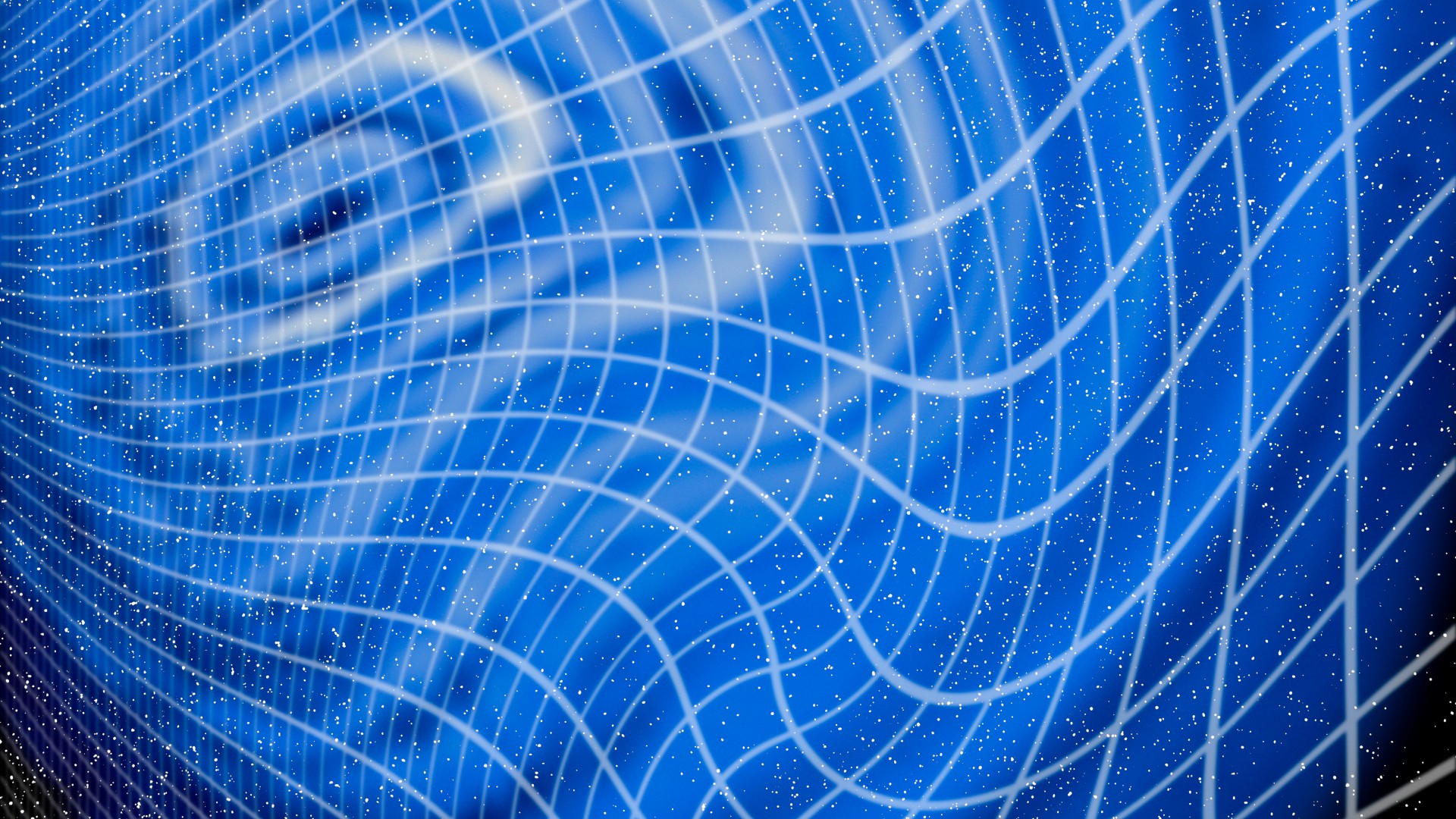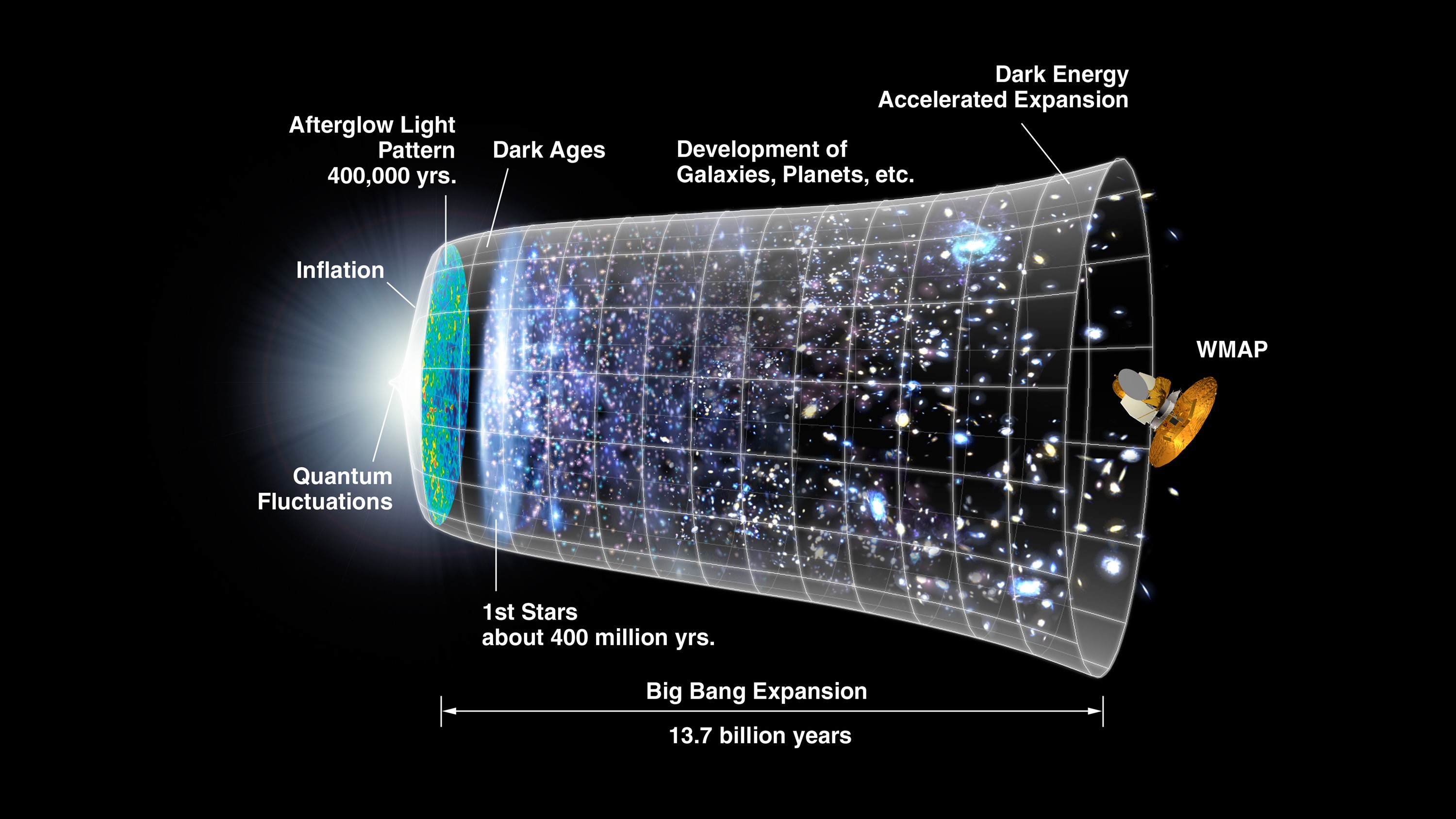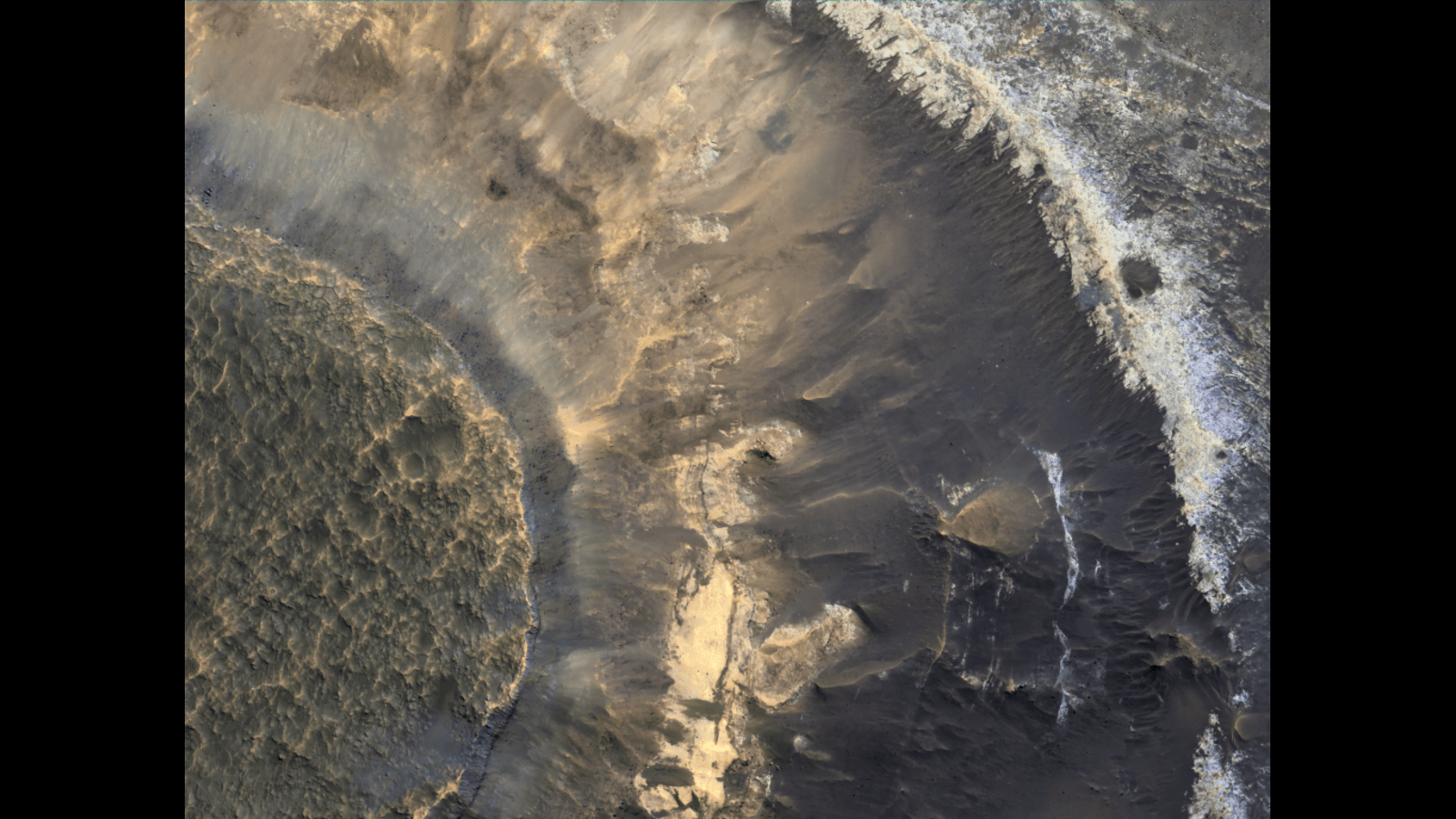Faint gravitational waves may be from primordial fractures in space-time
The early universe may have been such a violent place that space-time itself fractured like a pane of glass, releasing gravitational waves that astronomers say we may have already detected.

The early universe may have been such a violent place that space-time itself fractured like a pane of glass. Those fractures would have released floods of gravitational waves, and a team of astronomers has discovered that we may have already detected these ripples in the fabric of space-time.
The team, who reported their results recently in a paper submitted for publication in the Journal of Computational Astrophysics and published on arXiv.org, claim that they have seen evidence for so-called domain walls in the early universe.
When our universe was incredibly young, it was also incredibly exotic. The four forces of nature were bound up into a single, unified force. We do not know what that force looked like or how it operated, but we know that as the universe cooled and expanded, that unified force fractured into the four familiar forces we have today. First came gravity, then the strong nuclear force splintered off, and lastly, the electromagnetic and weak nuclear forces split from each other.
Related: The history of the universe: Big Bang to now in 10 easy steps
With each of these splittings, the universe completely remolded itself. New particles arose to replace ones that could exist only in extreme conditions previously. The fundamental quantum fields of space-time that dictate how particles and forces interact with each other reconfigured themselves. We do not know how smoothly or roughly these phase transitions took place, but it's perfectly possible that with each splitting, the universe settled into multiple identities at once.
This fracturing isn't as exotic as it sounds. It happens with all kinds of phase transitions, like water turning into ice. Different patches of water can form ice molecules with different orientations. No matter what, all the water turns into ice, but different domains can have differing molecular arrangements. Where those domains meet walls, or imperfections, fracturing will appear.
Probing the GUT
Physicists are especially interested in the so-called GUT phase transition of our universe. GUT is short for "grand unified theory," a hypothetical model of physics that merges the strong nuclear force with electromagnetism and the weak nuclear force. These theories are just beyond the reach of current experiments, so physicists and astronomers turn to the conditions of the early universe to study this important transition.
Breaking space news, the latest updates on rocket launches, skywatching events and more!
The GUT phase transition, which occurred when the universe was the barest fraction of a second old, may very well have left behind domain walls, a network of boundaries between different configurations of space-time. These defects could not have lasted long, however. If they persisted for a few seconds, or even minutes, their intense energies would have thrown off the process of nucleosynthesis, which gave rise to all of the primordial hydrogen and helium in the universe or distorted our images of the cosmic microwave background (CMB), the leftover radiation from the Big Bang.
So this interconnected set of domain walls had to decay into other particles — either normal particles, like electrons or quarks, or more exotic particles, like some form of dark matter. Either way, that decay process, coupled with the undulating motion of the domain walls themselves, would have released a flood of gravitational waves that could persist to the present-day universe.

Surveying the domain
Those gravitational waves would be incredibly weak, and impossible to detect with existing ground-based gravitational wave facilities. But for over a decade, several teams of astronomers around the world have instead been looking to pulsars to map gravitational waves sloshing through the universe.
Pulsars are incredibly precise timekeeping objects, able to maintain their rhythm down to less than a millionth of a second. If a gravitational wave passes between us and a set of pulsars, however, that will subtly affect the period of pulsation. By studying large numbers of pulsars for long periods of time, we can hope to find signals of a background frothing of gravitational waves.
These pulsar timing arrays, like the NANOGrav experiment and the European Pulsar Timing Array, have already found hints of a signal. Most astronomers believe this signal is due to the combined action of millions of supermassive black holes colliding with each other over billions of years.
But the new study presents a different picture. The team argues that the signal also could be explained by domain walls decaying in the early universe. Their models allow for the domain walls to decay fast enough to not violate other observations, like the CMB, while still providing a strong enough signal to explain the pulsar-timing-array data.
Because the signals in the data are very faint and not confirmed to come from any particular source, there's room for this kind of radical proposal. The team argues that future pulsar timing measurements should be able to distinguish their model of decaying domain walls from the traditional picture of colliding supermassive black holes. Also, if their model is accurate, the domain walls should decay into either normal or exotic particles. Either way, that should be detectable with future, much more sensitive CMB measurements.
If the result holds up, it will be a major win for physics: The first time we've discovered concrete evidence for GUT phase transitions and the beginnings of a new understanding of physics.
Follow us on Twitter @Spacedotcom or on Facebook.
Join our Space Forums to keep talking space on the latest missions, night sky and more! And if you have a news tip, correction or comment, let us know at: community@space.com.

Paul M. Sutter is a cosmologist at Johns Hopkins University, host of Ask a Spaceman, and author of How to Die in Space.
-
Pentcho Valev "Special relativity is based on the observation that the speed of light is always the same, independently of who measures it, or how fast the source of the light is moving with respect to the observer. Einstein demonstrated that as an immediate consequence, space and time can no longer be independent, but should rather be considered a new joint entity called "spacetime." https://www.bowdoin.edu/news/2015/04/physics-professor-baumgarte-describes-100-years-of-gravity.htmlReply
So spacetime and LIGO's gravitational waves (ripples in spacetime) do not exist if the speed of light is not "always the same". It is obviously not the same for the stationary observer and the moving observer here:
bg7O4rtlwEEView: https://youtube.com/watch?v=bg7O4rtlwEE
The speed of the light pulses relative to the stationary observer is
c = df
where d is the distance between subsequent pulses and f is the frequency at the stationary observer. The speed of the pulses relative to the moving observer is
c'= df' > c
That is, the speed of light relative to the observer VARIES with the speed of the observer.
The speed of light VARIES with the speed of the emitter, as posited by Newton's theory
and unequivocally proved by the Michelson-Morley experiment:
"Emission theory, also called emitter theory or ballistic theory of light, was a competing theory for the special theory of relativity, explaining the results of the Michelson–Morley experiment of 1887...The name most often associated with emission theory is Isaac Newton. In his corpuscular theory Newton visualized light "corpuscles" being thrown off from hot bodies at a nominal speed of c with respect to the emitting object, and obeying the usual laws of Newtonian mechanics, and we then expect light to be moving towards us with a speed that is offset by the speed of the distant emitter (c ± v)." https://en.wikipedia.org/wiki/Emission_theory
Banesh Hoffmann, Einstein's co-author, admits that, originally ("without recourse to contracting lengths, local time, or Lorentz transformations"), the Michelson-Morley experiment was compatible with Newton's variable speed of light, c'=c±v, and incompatible with the constant speed of light, c'=c:
"Moreover, if light consists of particles, as Einstein had suggested in his paper submitted just thirteen weeks before this one, the second principle seems absurd: A stone thrown from a speeding train can do far more damage than one thrown from a train at rest; the speed of the particle is not independent of the motion of the object emitting it. And if we take light to consist of particles and assume that these particles obey Newton's laws, they will conform to Newtonian relativity and thus automatically account for the null result of the Michelson-Morley experiment without recourse to contracting lengths, local time, or Lorentz transformations. Yet, as we have seen, Einstein resisted the temptation to account for the null result in terms of particles of light and simple, familiar Newtonian ideas, and introduced as his second postulate something that was more or less obvious when thought of in terms of waves in an ether." Banesh Hoffmann, Relativity and Its Roots, p.92 https://www.amazon.com/Relativity-Its-Roots-Banesh-Hoffmann/dp/0486406768 -
mbee1 Reply
The operational word is may. This is basically a guess wrapped up in physics mumbo jumbo to pay for the grant which let them go someplace warm to escape the cold. Jamaica comes to mind as a possible destination. The claim all the forces were one is simply another guess wrapped up in physics mumbo jumbo. We actually have zero idea of what happened 13 plus billion years ago. We do have some data and a lot of people trying to put that into understandible terms mostly using some neat math which is itself a guess. I suspect that quantum effects may hold the clue as they were not around when Einstein and the rest came up with the group think current view of physics, the big bang, expansion from a point source etc. There is a minority alternate physics types with different explanations with neat math as well . If it turns out spaceis not fixed and time is changeable without altertering ones velocity small nuclear power sources become buildable and that would alter a lot of things.Admin said:The early universe may have been such a violent place that space-time itself fractured like a pane of glass, releasing gravitational waves that astronomers say we may have already detected.
Faint gravitational waves may be from primordial fractures in space-time : Read more
